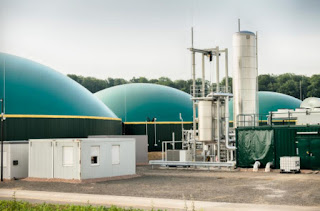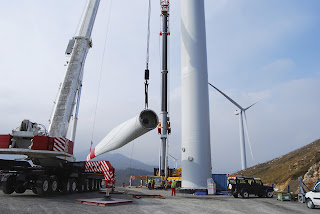 UHPC
Ultra High Performance Concrete has been used for many years in offshore wind
UHPC
Ultra High Performance Concrete has been used for many years in offshore wind
and onshore wind energy production.
We
produce our UHPC for these applications. The new grades UHPC are currently being tested and will be available to
the market later this year.
Monopile
wind turbine designs are still the most widely used standard
foundation design in many coastal areas. Jackets -, Gravity base -,
Tripods - and Tri-piles systems are also used depending on
requirements and needs.
UHPC
grouting is used in all foundation techniques.
 Monopiles
Monopiles
UHPC
grouting material is used for the connection between monopile and
transition pieces.
We
estimate that more than 2000 monopiles worldwide have been installed
with UHPC grouting and transitions pieces.
At the
moment we are working on the 4th generation of grouting material. In
addition to the technical improvements, the fulfillment of a wide
variety of environmental requirements is the prime objective of the
development.
Benefits
of using UHPC grouting material for the transition piece

Extremely
high strength
Very
good fatigue properties
Minimal
shrinkage
Extreme
bond between UHPC grouting material and steel
Fast
setting development
Very
high inner cohesion
No
mixing with sea water
Absolutly
seawater resistant
Very
low hydration heat
No
corrosion
Tripile
A
Tripile foundation consists of three steel piles driven into the
seabed after which a three-legged transition piece structure is slid
into the three piles. The overlaps between piles and transition piece
are grouted with UHPC concrete.
The UHPC
concrete connections evenly distribute the forces from the
three-legged transition piece to the piles
Tripod
A Tripod
support structure/foundation is secured in place by driving three
piles into the seabed through a sleeve in each of the three corners.
UHPC
concrete is pumped into the annuli between pile and sleeve to ensure
a strong and durable connection.
Jacket
Jacket
foundations are secured to the seabed by four piles placed in a
sleeve in each corner and driven into the seabed. Jackets are
generally considered to be better than monopiles for seabeds where
the substrate is poor or deeper water. So here UHPC grouting can be
used in the "transition piece" and in the lower foundation.
Gravity
foundations
Are well
suited for rocky sea beds. The complete foundation system can be
manufactured on land and then pulled into position with a ship and
then sunk. Depending on the design, the entire foundation piece can
be made from UHPC. UHPC will be perfect for slip casting the
entire foundation.
After the use of UHPC grout in offshore wind energy generation, the experience gained in onshore wind energy production has also been exploited.
Steel Tower
So far, steel towers in cylindrical or conical segment construction have been the state of the art.
Depending on the required hub height, up to five segments were mounted on top of each other. With the new tower heights, the segment diameters are getting bigger and bigger and the road transport between production and the site is becoming an ever greater problem.
Concrete Tower
More and more, as an alternative to steel towers, concrete towers are also produced and assembled in cylindrical, conical or polygonal segments. A disadvantage compared to the steel towers is the high wall thickness, which makes larger foundations necessary
The advantage is
- Favorable vibration characteristics, which leads to reduced noise emissions.
- Long life expectancy
- An ideal solution for high tower high and large rotor diameter
- Transport cost savings due to possible on-site manufacture
- The use of special UHPC concrete grades can lead to slender constructions and thus rougher component weight.
- Lower component weight can also make the foundation dimensioning more favorable, which can lead to cost reduction. The material experiences in the offshore transitionpiece technology can also be of advantage when using UHPC grout in the imbed ring assembly (connection tower / foundation).
- Since UHPC concrete of high quality have virtually no pore formation, they are extremely resistant to corrosion.
- There are little or no maintenance costs.
- The individual segments can be transported more cheaply than is possible with the steel segments.
- On-site fabrication is the use of slipforming is another option including the use of local concrete raw materials for the production of high-quality UHPCs.
- Furthermore, it is possible to produce extremely exact segments with UHPC grout material, which requires no or very little post-processing of the segment abutment surfaces.
- Our UHPC materials reach at least 70% of their rated strength in less than 48 hours, which can lead to lower manufacturing costs for segment production and delivery times can be drastically reduced.
Hybrid towers
This type of tower construction is a combination of concrete (lower part) and steel construction (upper part). IT combines most of the advantages of steel tower and accentuated tower technology. Here, too, the use of UHPC can lead to additional benefits and savings in terms of material and financial resources.
A segment construction or on-site casting by slipforming are possible. This reduces the costs of transport and reduces the foundation geometries.
WPE DK International
Phone: 0049 176 601 73146
E-mail: info@wpe-dk.dk
Homepage: www.wpe-dk.com
 Two new UHPC security projects are
Two new UHPC security projects are The second project also applies to the
The second project also applies to the



























